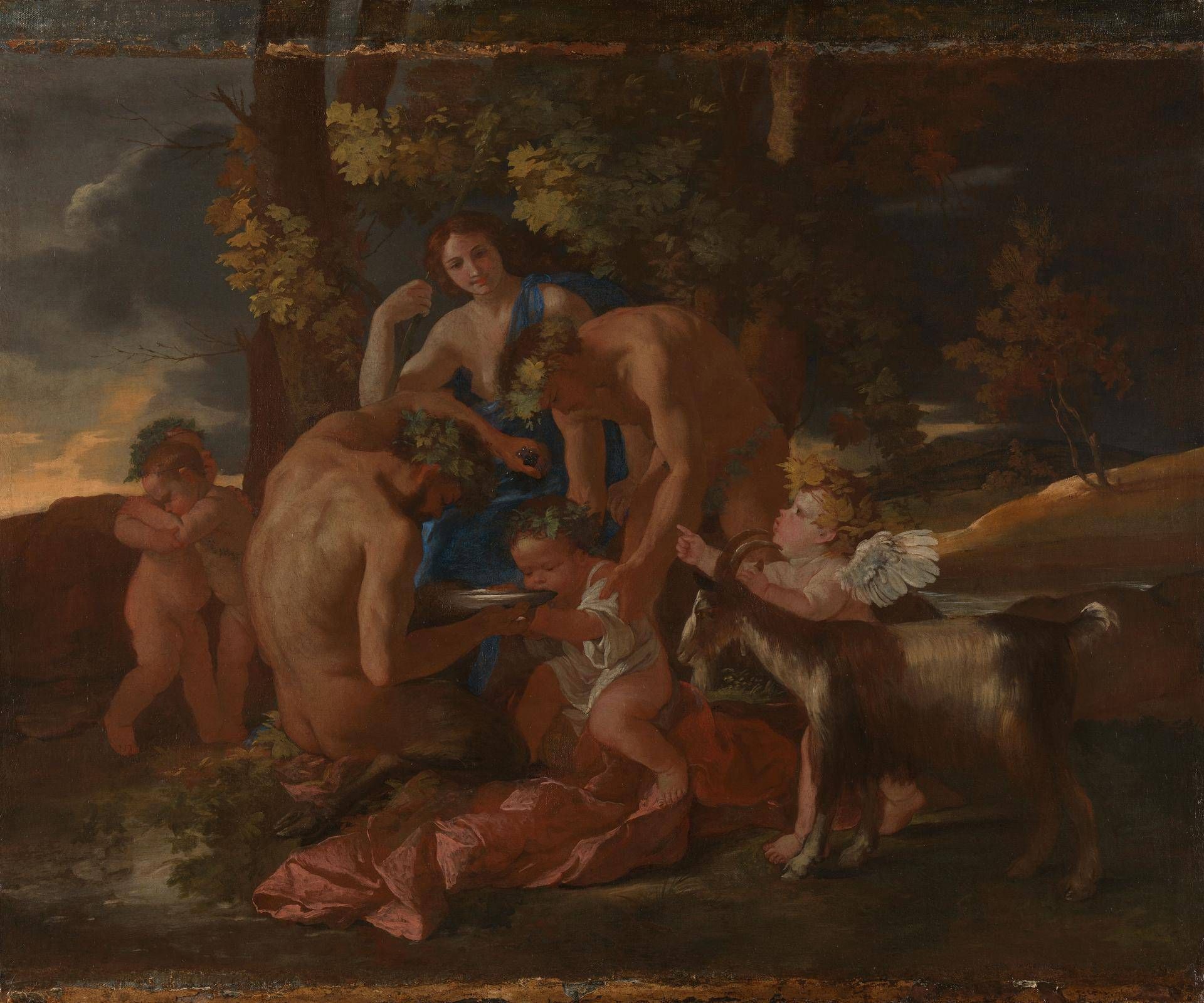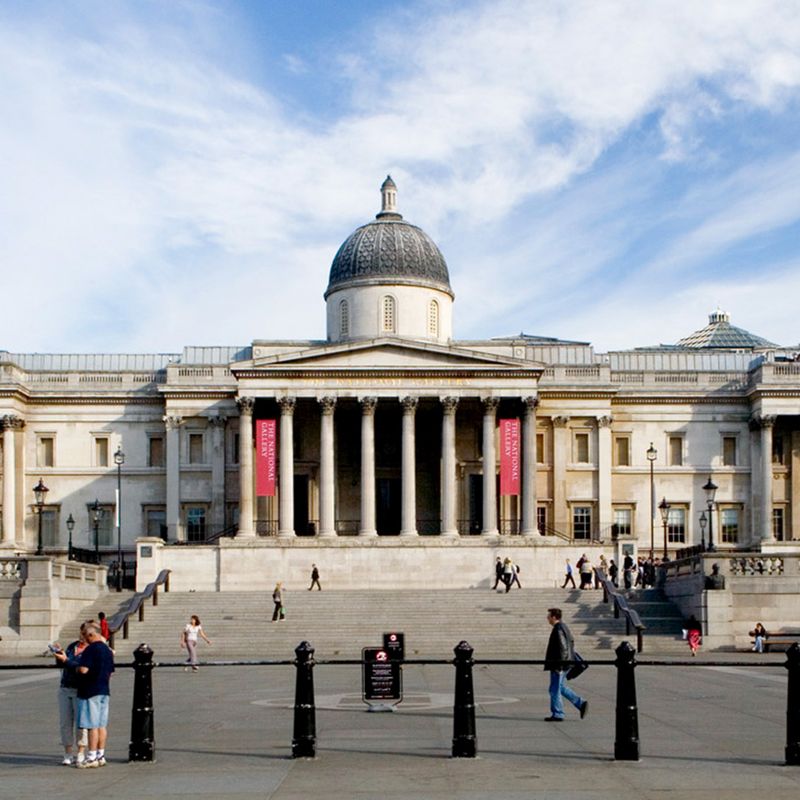
The Nurture of Bacchus
The infant Bacchus, god of wine, drinks from a bowl into which a satyr squeezes grape juice representing wine. Paintings commonly show Bacchus as a drunken adult, but to show him drinking alcohol at this young age is unusual. Ovid's Metamorphoses describes how the six nymphs of Nysa take care of the infant Bacchus in their cave and nurture him with milk (Book III: 314-15). But here there is only one woman, dressed in blue, and Bacchus is not given milk.
The painting probably shows an earlier episode, in which Bacchus's aunt Ino watches over him (Book III: 313-14). She could be the seated woman. Her husband, Athamas, the son of the wind god Aeolus, could be the man holding Bacchus. The two young boys behind them may be their sons. The story has a tragic outcome: Juno is jealous of Ino's pride in Bacchus and sends Ino and Athamus insane, which causes Athamus to kill one of his sons. Poussin may be alluding to this sad story in the dark clouds and goat, since goats who had eaten grapes were sacrificed.
Poussin painted an earlier version of this subject (now in the Louvre, Paris) and also The Childhood of Bacchus (now at the Musée Condé, Chantilly). The muscular poses in this painting show Poussin's study of classical sculpture. The colourful draperies contrast with the tanned skin tones and subtle shades of the foliage, and were inspired by sixteenth-century Venetian painters such as Titian and Bellini.
The original owner of this painting is unknown. It was painted in around 1628, at a time when Poussin was living in Rome and was popular with the prominent art collectors Cardinal Francesco Barberini and Cassiano dal Pozzo. The canvas is quite worn and an additional strip of canvas has been added to the top of the painting. The blue pigment used for the woman's clothing has lost its vitality and at some point a girdle of vine leaves was added to the standing man, which has now been partially removed.
Credit: Bequeathed by G.J. Cholmondeley, 1831; entered the Collection, 1836
c. 1628
Oil on canvas
80.9 x 97.7 cm
NG39
Image and text © The National Gallery, London, 2025
Where you'll find this

National Gallery
Permanent collection





